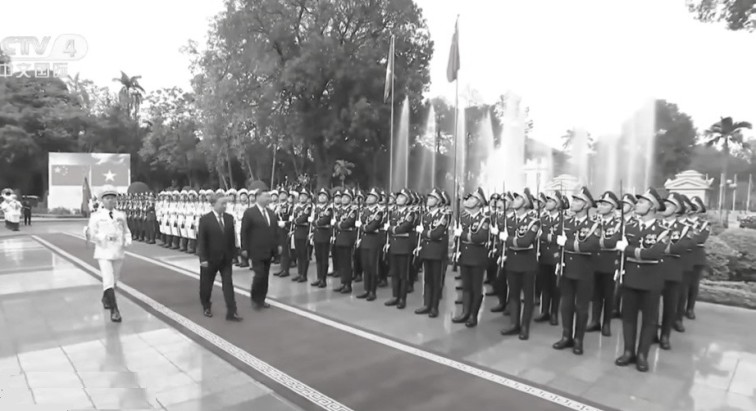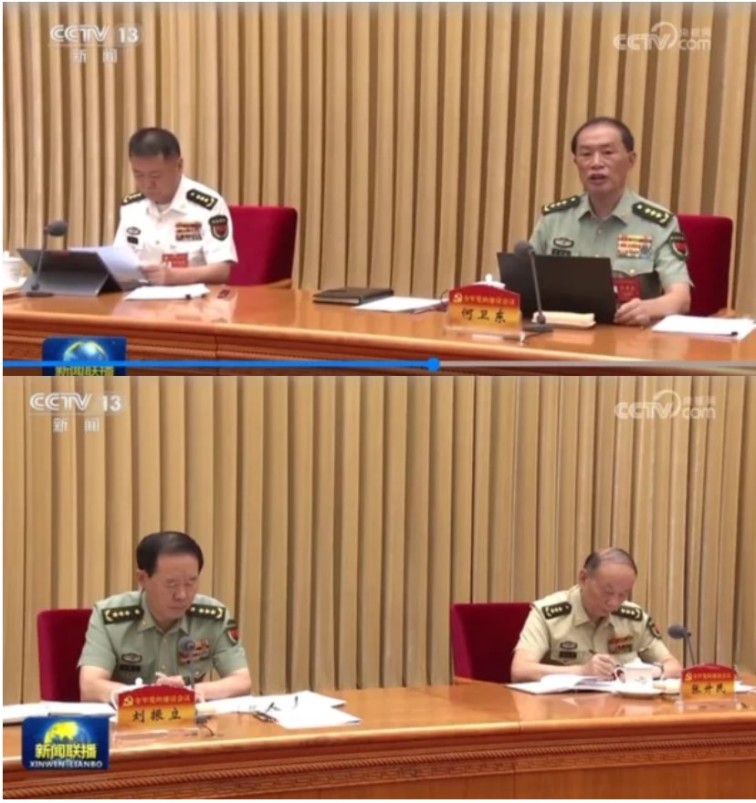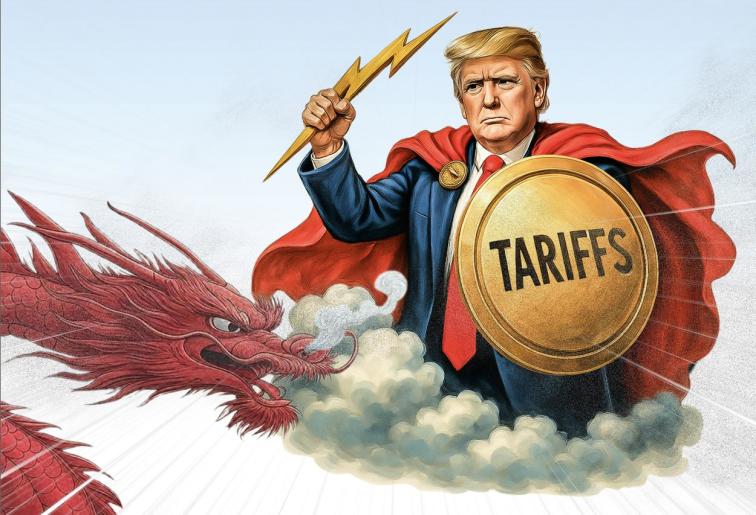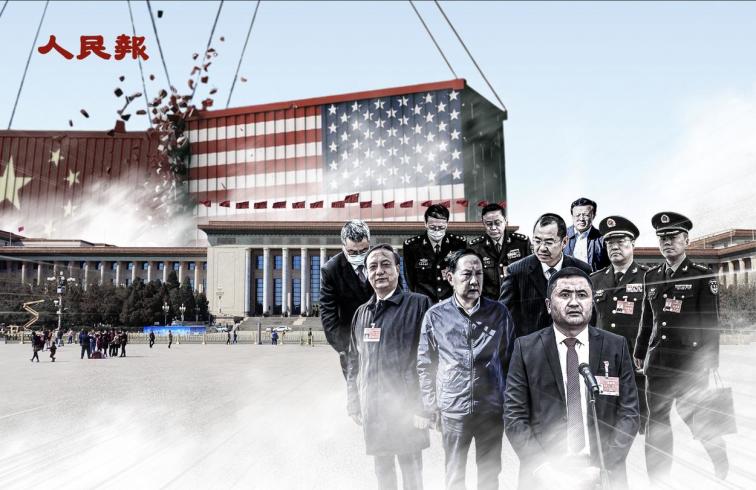Chinese Coast Guard Intercepts Vietnamese Fishing Boat (Video Screenshot)
[People News] An article published by Newsweek on April 14, titled 'How the Chinese Communist Party's Military Quietly Takes Control of the Pacific,' highlights alarming findings from cooperation projects in Taiwan, New Zealand, the Czech Republic, and other regions. The report indicates that through its 'Belt and Road' initiative, the Chinese Communist Party has deployed at least 50 military-civilian dual-use infrastructures in the Pacific, with the intention of expanding its military influence.
According to Radio Free Asia, Newsweek references research by Yang Yikui, an assistant researcher at Taiwan's National Defence Security Research Institute, who has identified 39 active strategic nodes. The magazine has also uncovered an additional 11 nodes, bringing the total to at least 50. The total investment is approximately $3.55 billion, which includes funding from the Chinese government, banks, regional development banks, and various direct and indirect grants and loans from different continents.
Newsweek notes that these nodes are spread across 11 Pacific island nations, representing about two-thirds of the 18 member countries of the Pacific Islands Forum. Among these, 26 are airport construction projects, and Yang Yikui believes that at least 12 of these airports can accommodate the largest military transport aircraft of the Chinese Communist Party. While these projects may seem civilian, they actually form a continuous stretch of approximately 3,000 miles of 'strategic nodes' extending from Papua New Guinea to Samoa.
On April 14, Yang Yikui published a research report titled 'The Military-Civilian Dual-Use Infrastructure of the CCP in the Pacific' in the American journal The Diplomat, warning that the Chinese Communist Party (CCP) is embedding its military ambitions into Pacific island nations through the development of military-civilian dual-use infrastructure, including ports, docks, fisheries, aviation hubs, and information and communication technology networks, as part of its 'Belt and Road' initiative.
In the report, Yang Yikui highlighted that there are 9 ports and docks, 2 fishery facilities, 17 aviation projects, and 14 ICT infrastructures associated with Chinese enterprises, the majority of which are state-owned and linked to the defence sector. These assets are presented as private investments while simultaneously enhancing the operational capabilities of the CCP's military. They could potentially be weaponised during the transition from peace to war, thereby aiding the CCP in achieving its strategic goals.
Yang Yikui's analysis reveals that the CCP is circumventing scrutiny, and the connections between Chinese contractors and defence entities have raised additional concerns, such as the risk of sensitive geospatial data being transmitted directly to Beijing. The CCP is 'normalising' its military presence in the Pacific, leveraging concealed dual-use infrastructure to bolster its command, control, communications, computers, intelligence, surveillance, reconnaissance, and kill chain capabilities. Notably, in 2024, Beijing conducted a test launch of an intercontinental ballistic missile in the Pacific. Furthermore, the CCP's seabed mining initiatives with Pacific nations like Fiji, Samoa, Kiribati, and the Cook Islands have enhanced underwater robotic capabilities that support submarine navigation.
Yang Yikui noted that in February this year, the Chinese Communist Party (CCP) military conducted a live-fire exercise in the Tasman Sea with little to no warning, catching Australia, New Zealand, and nearby regions off guard and leading to three days of air traffic disruptions. The Chinese Navy is projected to have 400 operational vessels this year, increasing to 425 by 2030, with its operational range increasingly extending beyond the first island chain to the third island chain and even reaching South America.
According to Yang Yikui's paper, if the CCP strengthens its control over these strategic points, it could manipulate trade flows, disrupt global markets, and exert political pressure on both regional and global players.
Shen Mingshi, a researcher at Taiwan's National Defence Security Research Institute, mentioned in an interview with Radio Free Asia that the joint statement from last year's Quad summit indicated that the U.S., Japan, the U.K., and Australia should assist countries in the Southwest Pacific in constructing undersea cables.
Shen Mingshi remarked, "If you don't help them build these cables, the CCP will step in and take control. These undersea cables will enhance communication and internet infrastructure in Southwest Pacific nations, making them more dependent on Australia and the United States rather than solely on the CCP."
Shen Mingshi emphasised that Yang Yikui's report underscores that the CCP's influence is no longer limited to the west or surrounding areas; it has now expanded eastward and southward, reaching the Southwest Pacific. If all these countries in the Southwest Pacific come under CCP control, it will significantly impact Australia and the United States.
Shen Mingshi stated, "The United States is not only forming connections with Australia but also with Japan, India, and France. Last year, when two Chinese warships participated in exercises in Australia and New Zealand, it became evident that they would not sail directly from China to those locations; instead, they could dock at island nations in the Southwest Pacific or potentially establish overseas military bases in the future to deploy additional troops, ammunition, and weapons, thereby increasing their regional influence."
Shen Mingshi also noted that China is involved in constructing numerous ports and runways in the Southwest Pacific, aiming to project its long-range military capabilities into the area and serve as a relay base to exert pressure on Australia, the United States, and others.
Zhong Zhidong, an assistant researcher at Taiwan's National Defence Security Research Institute, commented in an interview with Radio Free Asia that the implications of China's actions are more symbolic than practical.
Zhong Zhidong remarked, "The Chinese Communist Party is asserting its presence in the South Pacific and challenging the United States, particularly in nations that the U.S. traditionally considers its backyard. This clearly illustrates the Chinese Communist Party's commitment to outward expansionism, rather than mere rhetoric. By engaging in these activities in South Pacific countries, it is possible that they may gather intelligence on the deployment of U.S. and allied forces during both peacetime and wartime. Regarding the projection of the People's Liberation Army's military capabilities, there is still much to observe, unless a military security agreement is established between the involved parties."











News magazine bootstrap themes!
I like this themes, fast loading and look profesional
Thank you Carlos!
You're welcome!
Please support me with give positive rating!
Yes Sure!